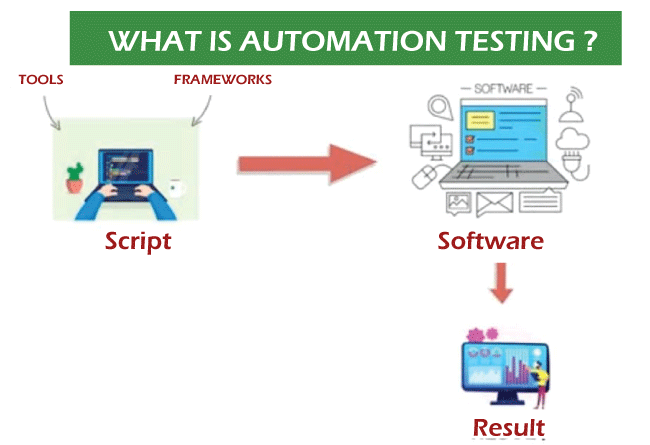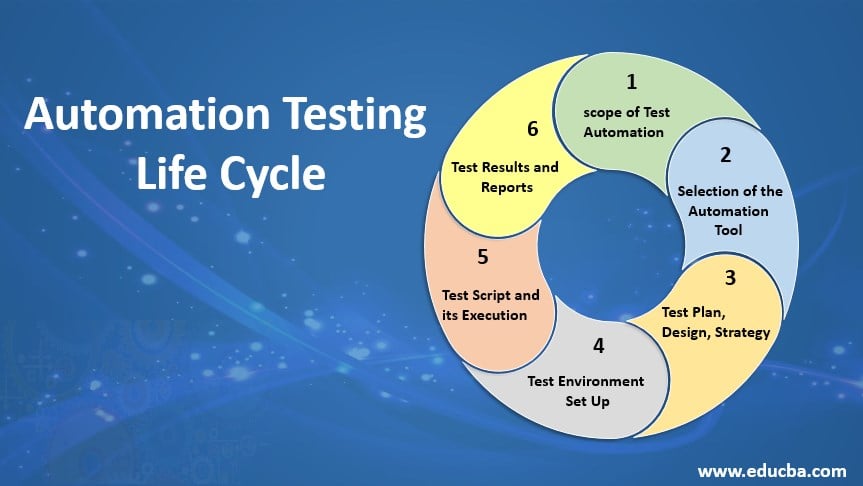Automation Testing: Key Tips to Improve Growth Lifecycles
Automation Testing: Key Tips to Improve Growth Lifecycles
Blog Article
From Manual to Automated Screening: A Comprehensive Overview to Transitioning Smoothly and Properly
In the world of software program screening, the shift from manual to automated procedures has actually come to be a significantly essential change for companies seeking to enhance performance and accuracy in their screening methods. The journey from guidebook to automated testing is not without its challenges, but when approached tactically and with a clear plan in mind, the benefits can be considerable.
Benefits of Automated Evaluating
Automated screening supplies numerous advantages, improving effectiveness and accuracy in software program growth processes. One primary advantage is the substantial decrease in screening time. Automated examinations can be run concurrently on numerous devices and operating systems, significantly quickening the screening phase contrasted to manual screening. This increased effectiveness permits faster comments on the top quality of the software application, enabling designers to determine and attend to concerns immediately.
In addition, automated screening guarantees a greater degree of precision in discovering problems. Since automated tests comply with predefined scripts, human error is lessened, causing even more trustworthy examination outcomes. Uniformity in testing is additionally boosted, as automated examinations perform the same steps precisely each time they are run. This consistency is critical in guaranteeing that all performances of the software program are thoroughly checked, reducing the probability of unseen insects sliding via to production.
Picking the Right Devices

Firstly, evaluate your purposes and demands. Comprehend the range of your job, the technologies entailed, and the capability of your group. This analysis will certainly assist you establish the attributes and abilities you call for in your testing devices.
Secondly, think about the compatibility of the devices with your existing procedures and systems. Seamless integration with your current software program growth lifecycle is necessary to guarantee a smooth transition to automation.
Additionally, review the scalability and adaptability of the devices. As your screening needs progress, the tools ought to be able to adjust and suit modifications properly.
Finally, factor in the support and community around the devices. Robust assistance and an energetic customer area can supply valuable resources and aid when implementing automated testing. By carefully considering these aspects, you can choose the right tools that align with your needs and set the phase for an effective shift to automated testing.
Writing Efficient Test Scripts

When crafting examination manuscripts, it is important to think about the specific requirements of the software being evaluated and make sure that the scripts resolve all critical functionalities. Clear and descriptive naming conventions for review examination manuscripts and test instances can boost readability and maintainability. Furthermore, integrating error handling devices Website within the examination manuscripts can assist in recognizing and addressing problems quickly.
Moreover, organizing test manuscripts into modular elements can improve reusability and scalability, lowering redundancy and boosting efficiency in examination script maintenance. Routine evaluations and updates to evaluate scripts are crucial to keep speed with progressing software application needs and capabilities. By following these concepts, testers can create efficient and durable examination scripts that add significantly to the success of automated testing procedures.
Integrating Automation Into Workflows
Effective combination of automation devices right into existing operations improves procedures and enhances productivity within software application growth cycles. When integrating automation into process, it is critical to determine recurring tasks that can be automated to conserve time and reduce human mistake. By seamlessly integrating automated screening tools like Selenium or Appium into the software application advancement lifecycle, teams can accomplish faster comments on code adjustments, leading to quicker pest discovery and resolution. This combination enables for constant screening throughout the development process, guaranteeing that any kind of concerns are determined early, leading to greater software application quality. Additionally, automation can be used to set off examinations immediately after each code devote, supplying prompt validation and freeing up testers to concentrate on even more complex scenarios. Appropriate assimilation of automation devices requires cooperation between advancement, screening, and procedures teams to develop a unified operations that enhances performance and performance in delivering top notch software.
Making Certain a Smooth Change
Successfully transitioning to automated screening involves precise preparation and careful implementation to decrease interruptions and optimize effectiveness in the software application advancement process - automation testing. To ensure a smooth shift, it is necessary to begin by conducting a comprehensive evaluation of the present screening procedures and recognizing locations where automation can bring the most considerable advantages. Involving with all stakeholders early on at the same time, including developers, testers, and task supervisors, is important for amassing support and buy-in for the automation initiative
Communication is crucial during this transition go to my blog phase. Clear interaction of the objectives, benefits, and expectations of automated screening aids to handle any type of resistance or worries that might occur. In addition, supplying ample training and sources for employee to upskill in automation devices and techniques is essential for ensuring an effective shift.

Conclusion
To conclude, transitioning from guidebook to automated screening provides countless benefits, consisting of increased efficiency and integrity. By selecting the proper devices, writing efficient examination scripts, and incorporating automation flawlessly into process, organizations can make sure a smooth and successful change. It is essential to accept automation as a useful possession in software application testing procedures to boost overall high quality and efficiency.
In the realm of software application screening, the change from manual to automated procedures has actually become a significantly vital shift for organizations looking for to boost effectiveness and precision in their testing techniques. Automated tests can be run concurrently on multiple tools and operating systems, substantially speeding up the testing stage compared to hand-operated screening. Uniformity in testing is additionally boosted, as automated tests carry out the very same actions exactly each time they are run.To make sure the successful implementation of selected screening tools, the production of effective test manuscripts plays an essential duty in verifying the performance and performance of automated processes - automation testing. By following these principles, testers can develop effective and robust examination manuscripts that contribute significantly to the success of automated screening procedures
Report this page